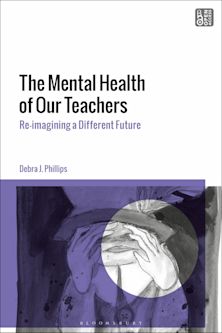Brain Research and Learning Theory
Implications to Improve Student Learning and Engagement
Brain Research and Learning Theory
Implications to Improve Student Learning and Engagement
Description
Virtually anyone who has attended college can attest to poor teaching approaches by very bright professors. Professors simply are not trained or taught how to best teach their content. They are not aware of learning theories, brain research, pedagogy and andragogy. They teach the way they were taught—their mimetic isomorphism.Not only will this book share insights from all these areas, but it will also help professors prepare syllabi, create curriculum, prepare lesson plans, create assignments, and develop assessments with these concepts in mind. Further, we will embed differentiation, culturally relevant strategies, and the use of technology to enhance learning.
Table of Contents
ACKNOWLEDGEMENTS
PREFACE
INTRODUCTION
LIST OF FIGURES & TABLES
PART I THE BRAIN
Nature and Nurture
The Unified Whole
Neurons
Brain Growth and Development
Regions of the Brain
Genetic Influences
Implications for Professors
The Brain
The Classroom and Its Environment
The Curriculum
Pedagogy
Assessment
Summary
Notes
PART IILEARNING THEORY
Behaviorism
Learning According to Behaviorism
Implications of Behaviorism in the College Classroom
Cognitivism
Learning According to Cognitivism
Multiple Intelligences
Culturally Responsive Learning
Implications of Cognitivism for the College Classroom
Constructivism
Learning According to Constructivism
Critical Theory and Critical Pedagogy
Implications of Constructivism for the College Classroom
Summary
Notes
PART IIIIMPLICATIONS AND APPLICATIONS
Implications
The Learning Environment
Curriculum and Pedagogy
Assignments
Assessment
Applications
Behaviorism
Cognitivism
Constructivism
Notes
BIBLIOGRAPHY
ANNOTATED BIBLIOGRAPHY
Product details
| Published | 13 Nov 2023 |
|---|---|
| Format | Ebook (PDF) |
| Edition | 1st |
| Extent | 1 |
| ISBN | 9798216279853 |
| Imprint | Rowman & Littlefield Publishers |
| Illustrations | 23 b/w illustrations; 7 tables |
| Publisher | Bloomsbury Publishing |
Reviews

ONLINE RESOURCES
Bloomsbury Collections
This book is available on Bloomsbury Collections where your library has access.


































